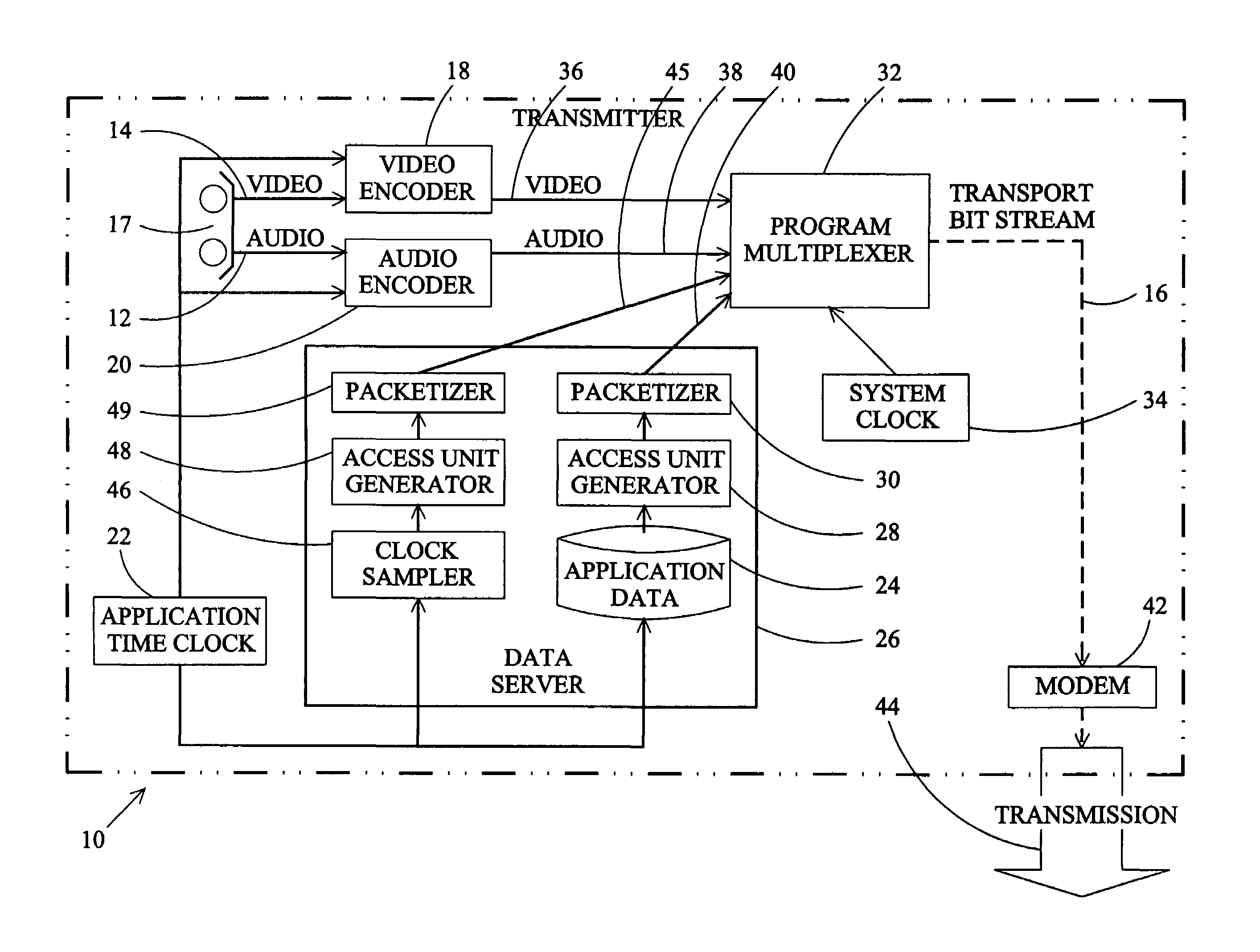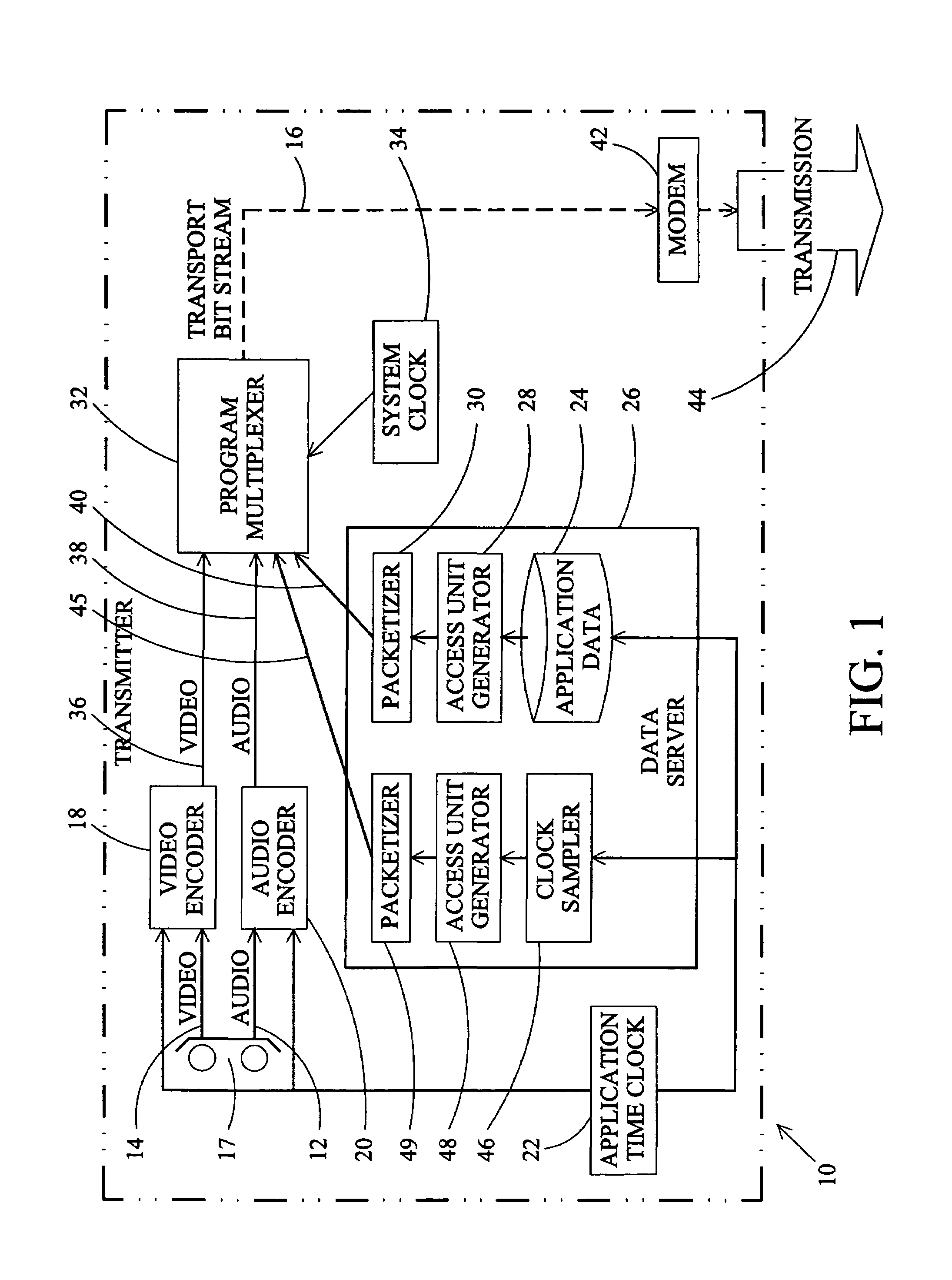Method of synchronizing events with a digital television audio-visual program
a technology of audio-visual programs and events, applied in the field of digital television, can solve the problems of author's inability to determine the appropriate system time, the author's inability to easily use clock references and time stamps to synchronize events or program elements outside the context of the data stream, and the dtv system does not provide for the transmission of a timecode in synchronization with the transmitted program
- Summary
- Abstract
- Description
- Claims
- Application Information
AI Technical Summary
Problems solved by technology
Method used
Image
Examples
Embodiment Construction
[0026]The production of a digital television (DTV) program involves the creation and combination of video elements, one or more audio elements and, optionally, related data services and applications. In the post production process, original optical source video from several sources may be combined, modified, and electronically generated video and audio added to produce the final release version of the production. Synchronization is essential to combining images, audio, and data from multiple sources. A timecode is used to synchronize the various elements of the program during its production. Video content is obtained from optical sources or generated electronically. If the original optical source footage is recorded on video tape, the timecode may be generated by the video camera and applied to the tape at the time of shooting. On the other hand, the timecode may generated by a separate timecode generator and added to the tape or other storage medium during editing. If the original ...
PUM
 Login to View More
Login to View More Abstract
Description
Claims
Application Information
 Login to View More
Login to View More - R&D
- Intellectual Property
- Life Sciences
- Materials
- Tech Scout
- Unparalleled Data Quality
- Higher Quality Content
- 60% Fewer Hallucinations
Browse by: Latest US Patents, China's latest patents, Technical Efficacy Thesaurus, Application Domain, Technology Topic, Popular Technical Reports.
© 2025 PatSnap. All rights reserved.Legal|Privacy policy|Modern Slavery Act Transparency Statement|Sitemap|About US| Contact US: help@patsnap.com



